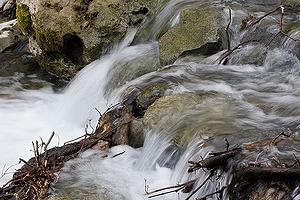Work to Upgrade Texas Water Quality Paying Off
AUSTIN, Texas, May 18, 2009 (ENS) - The water quality in Texas improved somewhat in 2007 over the previous year, according to the Texas Commission on Environmental Quality, TCEQ in its 2008 annual report on managing nonpoint source pollution issued Thursday.
Of the 925 water bodies tested in 2007, 386 were included on the 2008 303(d) List. This was a slight decrease from the 2006 303(d) List, which included 399 water bodies.
The total number of impairments also decreased from 543 recorded in 2006 to 516 documented in 2007.
In 2007, the Texas Commission on Environmental Quality assessed several specific groups of water bodies for the 2008 Texas Water QUality Index and 303(d) List of impaired waters required of all states under the federal Clean Water Act.
The TCEQ relied on cooperators, such as local and state water management agencies, to identify water bodies for the assessment.
A full assessment is planned for 2010.
The water bodies assessed in 2007 include classified segments and other segments with a pending regulatory reason for evaluation or the need to initiate or revise planning activities such as a total maximum daily load, TMDL, or standards revision.
Public comment was solicited in January 2008 and the Draft 2008 TWQI and 303(d) List was submitted to the EPA for approval on April 1, 2008. The TCEQ received final approval for the 2008 303(d) List on July 9, 2008.
 |
A stream near Austin, Texas (Photo by Uno Digerati) |
Elevated levels of bacteria, which impair the contact recreation use of water bodies, cause 53 percent of the listed impairments, the report shows. Many of these bacteria impairments are the result of urban and agricultural nonpoint source pollution.
Low dissolved oxygen, impairing many of the same water bodies, results in an unhealthy environment for aquatic life. Dissolved oxygen levels are depressed by both point and nonpoint sources of oxygen-demanding substances and nutrients which over-fertilize aquatic plants and algae.
Contaminants in fish tissue originate primarily from land-based activities, the report states, giving the example of heavy metals and organic contaminants such as pesticides that are often components of runoff from urban and agricultural land.
Click here for the complete 2008 TWQI and 303(d) List.
To collect more timely and accurate data, the TCEQ has established a Continuous Water Quality Monitoring Network to collect and display ambient water quality data in real-time. The data collected in the field are reported almost simultaneously to the TCEQ so that staffers are informed of changes in surface water quality in critical watersheds.
The monitoring stations are located throughout Texas using a combination of in situ probes and automated analysis instruments and monitor parameters, such as temperature, pH, dissolved oxygen, specific conductance, chlorophyll a, soluble reactive phosphorus, nitrate, and ammonia.
Data are transmitted from the stations to the TCEQ using phone modems, wireless modems and satellite telemetry. Once data are transferred, they are stored in the Leading Environmental Analysis and Display System database.
The data can be accessed by the public online at: www.texaswaterdata.org.
Currently, the Continuous Water Quality Monitoring Network has 63 sites, including the 11 new sites deployed in 2008. The TCEQ plans to continue to improve data return, data management, operator training, instrument selection, and establish additional monitoring sites during FY09.
The TCEQ and the The Texas State Soil and Water Conservation Board apply the watershed approach to managing nonpoint source pollution by supporting the development and implementation of Watershed Protection Plans.
The 15 plans now defined in Texas were developed through local stakeholder groups and a significant portion of the funding for preventing nonpoint source pollution under the Clean Water Act is dedicated to the development and implementation of Watershed Protection Plans where nonpoint source pollution has contributed to the impairment of water quality.
Click here for an overview and summary of Watershed Protection Plans in progress or completed in Texas.
Copyright Environment News Service (ENS) 2009. All rights reserved.
To subscribe or visit go to: http://www.ens-newswire.com